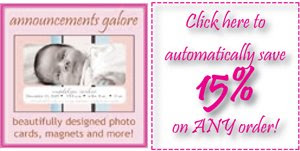This is Part IV of a five-part, weeklong series about how and why to write a press release. Click here for other installments. Come back tomorrow when we discuss how to create a distribution list you’re your release. Friday evening (August 7, 2009) one winner will be drawn to receive a special package from Market Mommy, including a press release, business card design and button ad design. The package is valued at $75! Please read the fine print at the end of the post for details on how to enter. You can register up to six times each day!!
As a journalism minor, the Associated Press Stylebook was something I was introduced to the first semester of my freshman year of college and I’ve had my trusty copy ever since. The book is like any other stylebook, in that it lays out the rules of a particular style of writing, in this case journalistic writing. The AP strives to keep its writing style concise and easy to read. This stylebook clarifies their rules on grammar, spelling, punctuation and usage.
Without going to extremes, I believe it is a good idea to follow AP style when writing a press release. It is the format that most journalists adhere to so why not make your release ‘publish ready’ and limit the editor’s need to edit?
I’m going to walk through some of what I feel are the basic essentials, but this is by no means a comprehensive list. If you are interested, the book can be purchased here, and is definitely affordable.
Abbreviations/Acronyms:: There is quite a bit of information about abbreviations contained in the stylebook. There are rules for abbreviating states, titles, addresses and more. However, it is best to avoid excessive abbreviating. Do not use abbreviations or acronyms that a reader would not easily recognize.
Contractions:: Contractions indicate informal writing and excessive use of them should be limited. It is best to spell them out instead. However, contractions that are listed in Webster’s New World Dictionary are technically acceptable.
Datelines:: A dateline, found at the beginning of a press release or news story, should include a city (in all capital letters) followed by the state, country or territory the city is located in. There should be a comma in between the city and state and there should be a dash following the state. There are cities that stand alone without a state and there are rules for abbreviating the states. All of which can be found in the stylebook.
Quotations:: When quoting someone in your press release, never alter the quotation. Always use it verbatim. Also, try to avoid fragmented quotes. If a quotation is long and cumbersome you may try to paraphrase it.
States:: The AP uses different state abbreviations than the United States Postal Service. This is one of the most common reasons for me to pick up my stylebook. Some shorter state names, like Iowa or Ohio, are never abbreviated in AP Style. The first letter is capitalized and there is a period at the end of the abbreviation. For example, Florida is abbreviated Fla. and Tennessee is abbreviated Tenn. They stylebook gives a comprehensive list of the AP state abbreviations and the ZIP code abbreviations as well.
As I mentioned, there is a lot of information contained in the AP Stylebook and without dedicated studying there is no way to memorize it all. However, it is an excellent reference and can improve your writing for the media. Especially when there is the possibility of a media outlet publishing your release without further investigation, it is nice for it to already be formatted in AP Style for the editor.
Now that you have a factual, concise, grammatically correct press release written we need to discuss distribution. Tomorrow, we’ll discuss creating your distribution list and getting your press release seen by the masses.
|
Numerals:: Numerals zero through nine should be spelled out and numerals 10 and over should be written as numbers. All numbers over 1,000 should include a comma. If a number begins a sentence, it should be spelled out, if the sentence can’t be restructured. There are several entries in the AP Stylebook pertaining to the use of numerals. Punctuation:: In the AP Stylebook, there is an entire chapter dedicated to punctuation. I will just note some key points. Commas should always be placed inside quotation marks. A colon introduces a list and a semicolon separates thoughts. Exclamation points and parentheses should not be used often. The fine print:: First and foremost the marketing package won must be used to promote a legitimate, mom-owned business. (Market Mommy reserves the right to disqualify any entrant on the basis of this criteria) Winners will be chosen by random.org. Below are the ways to register, you may come back and do the following EACH DAY for each new post! Be sure to leave a comment with a link for each entry or it won’t count! (Comments close each day at 11:59 p.m. EST) 1. Leave a comment on this post, any comment. 2. Join the Market Mommy mailing list (box to the right of this post) or comment and tell me you’re on the list. 3. Follow this blog or comment and tell me you are already a follower. 4. Become a Fan of Market Mommy on Facebook or comment and tell me you’re already a fan. 5. Follow Market Mommy on Twitter and Tweet about this giveaway, if you’re already a follower, just tweet. 6. Blog about this giveaway or grab our button ... you must link back to either this blog or Market Mommy's official site.
Posted by
Market Mommy
at
8:19 AM
Subscribe to:
Post Comments (Atom)
Happy First Birthday Market Mommy!
Here are some quick links to all of the First Birthday Extravaganza activities and contests!
* Enter to win our Mega Marketing Prize Package valued at over $2600! * Earn extra entries daily for the Mega Marketing Prize Package here. * For You Designs Giveaway * Cricket Stitches Giveaway * Cerra Giveaway * Bella Tunno Giveaway * Check out our informational guest blog posts the entire month of June! Thanks to all of our great Market Mommy friends who supplied posts! Vote for Market Mommy!Subscribe to our FREE e-newsletter!Grab our button!
Labels
Market Mommy on FacebookMarket Mommy on Facebook
Follow Market Mommy on Twitter!Blog Archive
About Me
FollowersTake our Survey!
Click here to take the survey now. The survey was created with eSurveysPro.com survey software.
Sites We Love
Donate
Love the free e-newsletter and all the great FREE marketing information provided by Market Mommy? Show your appreciation with a donation.
|




1 comments:
Post a Comment